Chronology
This chronology, written by Jennifer Vanore, originally appeared in the printed exhibition catalogue, Now Dig This! Art and Black Los Angeles, 1960–1980.
Four African American students in Greensboro, North Carolina—Ezell A. Blair Jr. (later known as Jibreel Khazan), David Leinhail Richmond, Joseph Alfred McNeil, and Franklin Eugene McCain—hold a lunch-counter sit-in at Woolworth's.
Inspired by the protests against racial discrimination cropping up in Southern states, students at Shaw University in North Carolina, under the guidance of Ella Baker, organize the Student Non-Violent Coordinating Committee (SNCC). "We Shall Overcome" becomes the informal anthem of the nonviolent civil rights movement of the 1960s when it is taught to students at the early SNCC meetings.
The Nation of Islam, led by Elijah Muhammad, begins to garner national attention and becomes the focus of extensive surveillance by the FBI under the direction of J. Edgar Hoover. Elijah Muhammad calls for a separate black state.
John F. Kennedy is elected the thirty-fifth president of the United States.
Benjamin Horowitz opens the Heritage Gallery on La Cienega Boulevard, the first commercial art-rental gallery in the area. The Heritage Gallery eventually becomes one of the first white-owned galleries in Los Angeles to show African American artists.

CBS radio broadcasts the final episode of Amos 'n' Andy. Making its radio debut in 1928, the show emerged from a culture of blackface, minstrel, and trickster traditions. During its run there were two unsuccessful campaigns to end the program, one launched in 1931 in Pittsburgh, the other in 1951 by the NAACP to take the related television show off the air. Although the television show ended in 1953 because of poor ratings, the radio program continued for another seven years.
The U.S. Supreme Court, in Boynton v. Virginia, rules that racial segregation in public transportation is illegal under the Interstate Commerce Act. The ruling becomes the legal basis for the interracial Freedom Rides of the 1960s.
The United Nations names 1960 the "Year of Africa," when seventeen nations on that continent gain independence.
The Los Angeles County Board of Supervisors approves a plan to divide the Los Angeles Museum of History, Science and Art into two separate entities: the Natural History Museum and the Los Angeles County Museum of Art (LACMA). The new LACMA opens in 1965.
The Supremes, an all-female musical group composed of Florence Ballard, Mary Wilson, and Diana Ross, sign with Motown Records in Detroit.
About 1,300 Cuban exiles land on the coast of southern Cuba armed with American weapons and military training and supported by U.S. armed forces. The Bay of Pigs invasion failed in its attempt to overthrow the political regime of Fidel Castro and served to increase tensions between the United States and Cuba.
The first Freedom Riders journey to the South. Thirteen CORE (Congress of Racial Equality) activists—seven black and six white—depart Washington, D.C., for New Orleans on two public buses to test the recent Boynton v. Virginia ruling. One bus is firebombed in Alabama and passengers on the other bus are brutally attacked by a mob, leading the governor to declare martial law.
Purlie Victorious opens on Broadway. Written by Ossie Davis and starring the author and his wife, Ruby Dee, the play is a satirical study of segregation. Along with A Raisin in the Sun and Take a Giant Step, it is one of an increasing number of plays to depict African American life, written by an African American and starring African American actors.
The Museum of Modern Art in New York opens the exhibition The Art of Assemblage. The show brings together early twentieth-century works by European artists such as Marcel Duchamp, Georges Braque, and Pablo Picasso with those by contemporary California artists such as Wallace Berman, Edward Kienholz, and Bruce Conner.
The Ebony Museum of Negro History (the precursor to the DuSable Museum of African American History) opens in Chicago on the first floor of schoolteacher Margaret Burroughs's home.
Henry Hopkins, director of the Huysman Gallery on La Cienega Boulevard in Los Angeles for less than a year, launches the fully integrated exhibition War Babies, showcasing the work of Ed Bereal (African American), Joe Goode (Jewish American), Larry Bell (Catholic American), and Ron Miyashiro (Japanese American). Its controversial poster leads to the gallery's closing. Hopkins is subsequently hired as a curator by LACMA.

W. E. B. DuBois joins the Communist Party at age ninety-three and assumes permanent residence in Ghana.
Musician and composer Horace Tapscott, a resident of the Watts neighborhood, founds a jazz collective known variously as the Underground Musicians' Association, the Union of God's Musicians and Artists Ascension, the Community Cultural Arkestra, and the Pan Afrikan Peoples Arkestra. The group offers music lessons and jazz concerts in Watts with the objective of raising black consciousness through music and community ownership.
The signing of the Évian Accords in France brings an end to the Algerian War. The conflict between France and Algeria began in 1954 as a struggle for independence from the colonial rule of the French government.
Dodger Stadium opens, hosting the newly relocated baseball team from Brooklyn, New York, as well as a variety of musical concerts. Its construction leads to the forced relocation of a primarily Latino community that fought unsuccessfully for more than ten years, in the "Battle of Chavez Ravine," to maintain control of their property.
Students for a Democratic Society (SDS) issues a manifesto titled "The Port Huron Statement." One of its main tenets encourages participatory democracy, while at the same time offering a scathing critique of the Cold War and racism within the United States. SDS members become important contributors to the New Left, antiwar, and civil rights movements.
The Ferus Gallery in Los Angeles gives Andy Warhol his first solo exhibition.
After being denied admission numerous times based on his race, James Meredith, with a court order in hand and escorted by federal marshals, becomes the first black student to attend Mississippi University (Ole Miss). In the mob violence that accompanies his enrollment, two people die and more than three hundred are injured.
Charles Mingus stages Epitaph, a two-hour-long event that mixes a variety of jazz types and solos. This is the only staging of the piece during his lifetime. Though not a contemporary success, it is now regarded as one of the great jazz masterpieces. Mingus allegedly wrote portions of it as a teenager in the 1940s when he was living in Watts.
Augustus F. Hawkins (D-Calif.) becomes the first African American from California to be elected to the U.S. Congress. He began his political career as a state assemblyman for South Los Angeles in 1935.
Artist Ruth Waddy forms Art West Associated, a group aiming to foster public discussion, coordinate educational forums, and advocate for the inclusion of African American artists in the L.A. art scene.
Walter Hopps becomes a curator at the Pasadena Art Museum.
Los Angeles ends its streetcar service after ninety years, contributing to the evolution of the city's car culture. The decreased accessibility to public transportation also leads to a rise in racial tensions, since it is now more difficult for many African Americans to get around from areas of the city where they are forced to live because of restrictive housing covenants.
The Southern Christian Leadership Conference (SCLC) and Martin Luther King Jr. launch their first nonviolent campaign, in Birmingham, Alabama. During this period King is arrested and on April 16 pens his famous "Letter from a Birmingham Jail." The initial nonviolent protests contribute to larger mass demonstrations opposing segregation. Local law enforcement in Birmingham uses police dogs and high-pressure water hoses on the demonstrators; media coverage of the assaults leads to increased national attention.

The California State Legislature passes the Rumford Fair Housing Act, which outlaws discrimination by property owners and landlords against potential buyers and renters based on race, color, religion, sex, marital status, and disability.
The March on Washington for Jobs and Freedom draws more than two hundred thousand demonstrators. Martin Luther King Jr. gives his famous "I have a dream" speech in front of the Lincoln Memorial.
The Ku Klux Klan bombs the Sixteenth Street Baptist Church in Birmingham, Alabama, killing four young black girls, Denise McNair, Carole Robertson, Addie Mae Collins, and Cynthia Wesley.
Walt and Roy Disney merge the Los Angeles Conservatory of Music and Chouinard Art Institute to create CalArts, the first institute in the United States to offer a higher-education degree in visual and performing arts.
President John F. Kennedy is assassinated by Lee Harvey Oswald in Dallas, Texas. Vice President Lyndon B. Johnson is sworn in as the thirty-sixth president.
Joan Ankrum opens the Ankrum gallery in Los Angeles. It will eventually show work by numerous African American artists, including Suzanne Jackson, Joe Overstreet, Dan Concholar, and Betye Saar.
David Hockney visits Los Angeles for the first time and shortly thereafter begins producing his first series of swimming pool paintings.
The California Eagle closes. One of the oldest African American newspapers in the West, it opened its doors in 1879. Charlotta Bass, who was one of the few African American female editors of a major newspaper in the United States, ran the Eagle for more than forty years and wrote many influential editorials.
Malcolm X breaks with Elijah Muhammad's Chicago-based Nation of Islam. He announces he will be organizing a new "black nationalist party" that would move African Americans from strategies of nonviolence to active self-defense against white supremacists.
The Museum of African Art opens in Washington, D.C., in the former home of abolitionist Frederick Douglass.
Nelson Mandela and seven others are sentenced to life imprisonment for attempting to overthrow the South African government in their fight to end apartheid.
President Lyndon B. Johnson signs the Civil Rights Act of 1964. The law forbids discrimination based on race and sex in employment practices, and outlaws segregation in public facilities, schools, and housing.
Congress passes the Gulf of Tonkin Resolution (known officially as the Southeast Asia Resolution). It authorizes President Johnson broader military powers in dealing with North Vietnam. This results in a prolonged military intervention by the United States in Vietnam without an official declaration of war.
The Mississippi Freedom Democratic Party demands to be seated at the Democratic National Convention, held in Atlantic City, New Jersey. The party members claim that the Mississippi delegates already in place had been unfairly seated because of discriminatory voting practices in certain districts that used literacy tests and the threat of violence to keep African Americans from voting. Although they do not gain the seats, their activism paves the way for women and racial minority delegates at future conventions.
James Woods, a local savings and loan officer and jazz club doorman, invites some local musicians and artists to help him form Studio Watts. Jayne Cortez, a Los Angeles poet, is made director of the workshop, which provides classes in painting, sculpture, dance, acting, and music to local residents while also making the space available to artists in need of studios for their own artistic production.
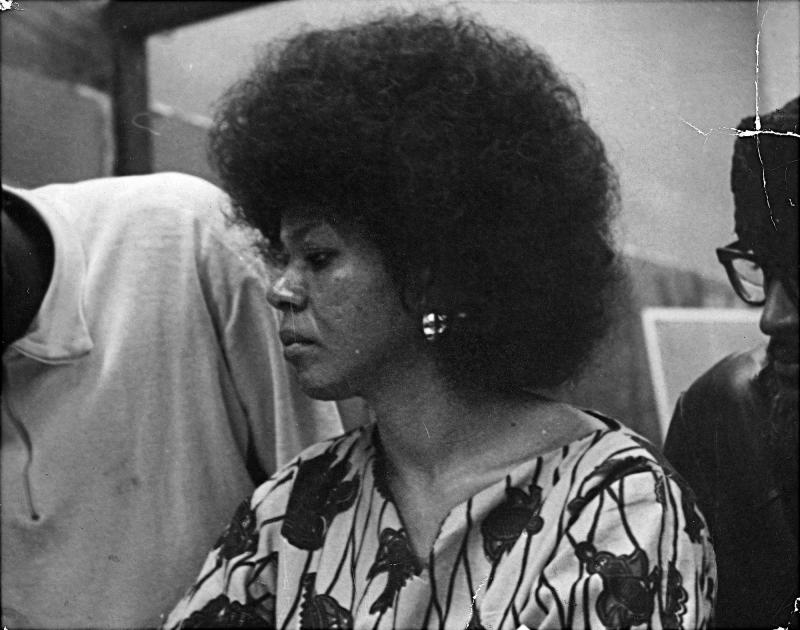
Martin Luther King Jr. is awarded the Nobel Peace Prize for his leadership in the civil rights movement and his dedication to nonviolent tactics. He is the fourteenth American to win the prize and the third black recipient.
Noah Purifoy, artist and social worker, helps found the Watts Towers Arts Center and becomes director of the community organization. Its original mission is to increase access to the arts for local residents and artists, targeting at-risk teens and exposing them to the arts.
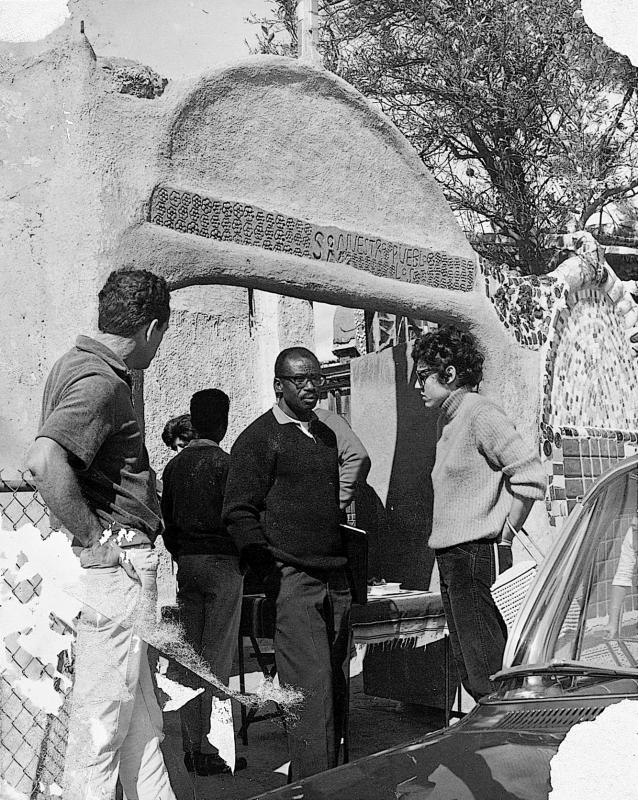
Malcolm X is shot and killed while giving a speech at a meeting for the Organization of Afro-American Unity in New York City.
The Los Angeles County Museum of Art opens along Wilshire Boulevard's Miracle Mile, becoming the second largest museum in the United States at the time, after the National Gallery of Art in Washington, D.C.
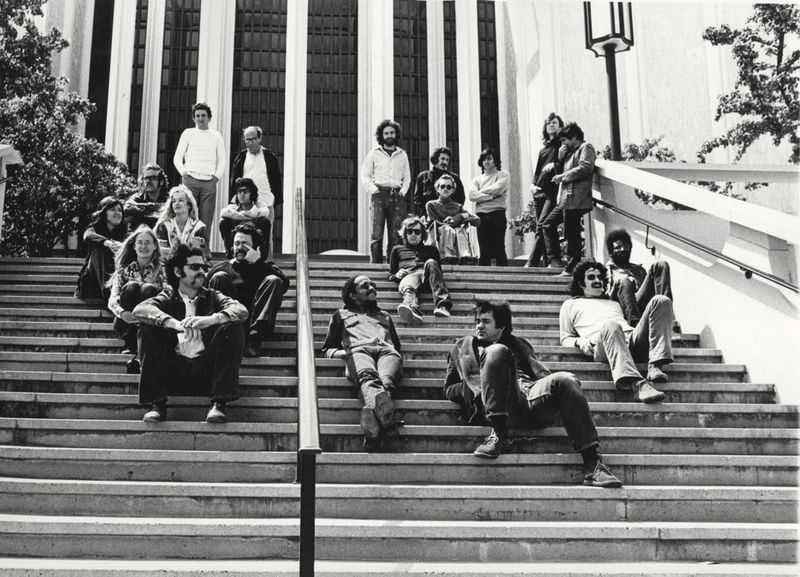
President Johnson signs into law the Voting Rights Act of 1965, outlawing the use of literacy tests to determine voter eligibility.
In Watts, a white police officer pulls over a young black man on suspicion of drunk driving. The ensuing altercation, witnessed by a growing crowd of onlookers, erupts into violence. Over six days of racial unrest, thirty-four people are killed, more than one thousand are injured, and local businesses sustain more than $200 million in damages.
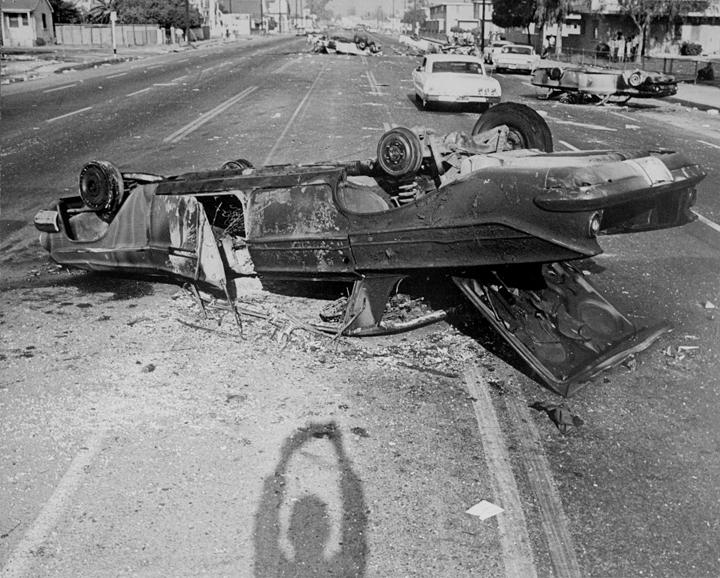
The federal Office of Economic Opportunity helps fund the relocation of the Watts Happening Coffee House, which had been destroyed in the Watts uprising. The new location becomes the center of arts and cultural production in Watts for years to come, housing the Pan Afrikan Peoples Arkestra, the Watts Repertory Theater, the Watts Writers Workshop, the New Art Jazz Ensemble, and the Mafundi Institute.
In response to the Watts uprising, Ron (Maulana) Karenga establishes the US organization, a black nationalist project. On a local scale, the group organizes around issues of arts and education. Karenga creates Kwanzaa as an African American and pan-African holiday.
Screenwriter and author Budd Schulberg forms the Watts Writers Workshop as an interracial response to the devastation of the Watts uprising. The creative writing workshop seeks to link politics with art in the writings and activism of its students.
Detroit-based obstetrician and gynecologist Dr. Charles Wright organizes with others to form the International Afro-American Museum. The collection they build will grow to become the Charles H. Wright Museum of African American History in Detroit, the world's largest institution dedicated to the African American experience.
Charles White begins teaching at Otis Art Institute in Los Angeles (now Otis College of Art and Design). His students include David Hammons, Timothy Washington, and Kerry James Marshall.
Charles Cowles takes over as publisher of Artforum and moves to Los Angeles; the magazine is housed in the same building as the Ferus Gallery. Through the journal, artists on the West Coast are able to gain national exposure.
Robert C. Weaver is named Secretary of Housing and Urban Development, becoming the first African American to serve in a Cabinet position.
The nearly 60-foot-high Artists' Tower of Protest (also called the Peace Tower) opens in Hollywood on Sunset Boulevard at La Cienega to protest U.S. involvement in Vietnam. Designed by sculptor Mark di Suvero and constructed with the assistance of Melvin Edwards, the tower was covered with some four hundred 2-by-2-foot paintings by artists from across the country and around the world.
President Leopold Senghor of Senegal stages the first World Festival of Negro Arts in Dakar. Activist and author W. E. B. DuBois is in attendance as are more than 130 artists, musicians, and dancers from the United States, including Duke Ellington.
Otis Redding records his album In Person at the Whisky a Go-Go at the famous Los Angeles club on the Sunset Strip.
Stokely Carmichael, chairman of the SNCC, gives a speech in Mississippi in which he coins the slogan "Black Power."
The National Organization for Women (NOW) is formed after the Commission on the Status of Women releases its report documenting the continued existence of sex discrimination in the workplace. NOW’s initial founders include Pauli Murray (first female African American Episcopal priest) and Shirley Chisholm (first female African American candidate for president of the United States).
A coalition of civil rights, antipoverty, and black nationalist groups organize to launch the first Watts Summer Festival, timed to coincide with the first anniversary of the Watts uprising. This festival celebrating black arts and culture will become an annual event.

The art gallery at the University of California, Los Angeles (UCLA) launches the monthlong exhibition The Negro in American Art, and two weeks later the UCLA University Extension starts the Negro and the Arts program, which includes lectures, stage performances, and concerts.
Huey Newton and Bobby Seale found the Black Panther Party for Self-Defense in Oakland. Their Ten-Point Program includes a call for adequate housing, jobs, health care, education, and an end to police brutality against blacks.
Yvonne Brathwaite, who had organized a legal defense team for participants in the Watts uprising in 1965, becomes the first African American woman to be elected to the California Assembly.
Gemini G.E.L. (Graphic Editions Limited) forms as an artists' print workshop in Los Angeles, helping to establish printmaking as an artistic medium on a par with drawing, painting, and sculpture.
Ronald Reagan is sworn in as governor of California.
Edward W. Brooke (R-Mass.) is sworn in as the first African American elected to the U.S. Senate.
Brockman Gallery opens in South Central Los Angeles. Started by two artist brothers, Alonzo and Dale Davis, the African American–owned gallery functions as a commercial gallery, later adding a nonprofit component.
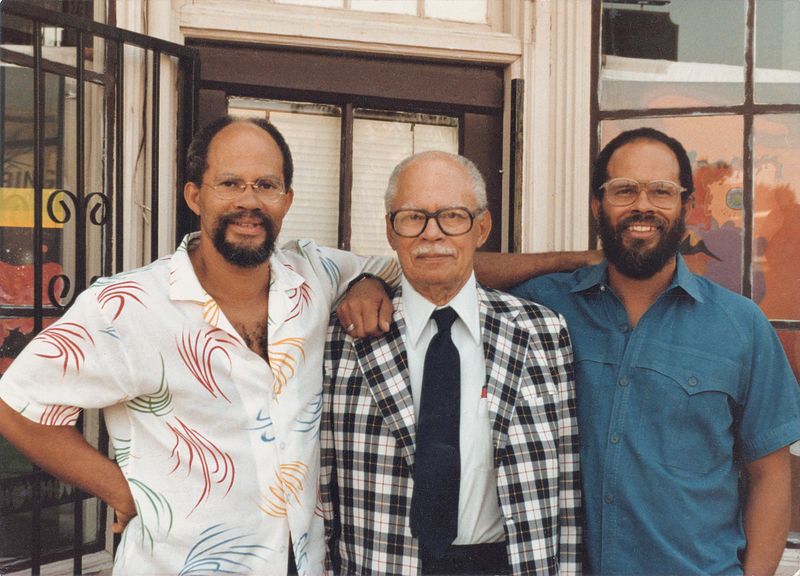
Heavyweight boxing champion Muhammad Ali, who changed his name from Cassius Clay after joining the Nation of Islam, refuses to enter military service on religious grounds. As a result, the World Boxing Association strips him of his boxing title.
Emory Douglas joins the Black Panther Party. He is made the first and only minister of culture for the party. During his tenure he produces the majority of images appearing in The Black Panther newspaper.
Bill Cosby wins an Emmy Award for Outstanding Continued Performance by an Actor in a Leading Role in a Dramatic Series for his work in the television program I Spy.
The Supreme Court hands down a 9-0 decision in favor of the plaintiffs in Loving v. Virginia, a landmark civil rights case outlawing antimiscegenation laws and legalizing interracial marriage.
Thurgood Marshall is appointed to the U.S. Supreme Court, becoming the first African American to serve on the high court.
Jimi Hendrix headlines at the Monterey Pop Festival in Monterey, California. Drawing close to ninety thousand people over the course of three days, the concert was the first of its kind and a precursor to Woodstock. The festival came to represent California counterculture and the beginning of the nation’s "Summer of Love."
Some one hundred thousand Vietnam War protesters descend on Washington, D.C. More than fifty thousand demonstrators assemble outside the Pentagon.
Carl Stokes is elected mayor of Cleveland, becoming the first African American mayor of a major city.
Jublo Solo opens the Black Man's Art Gallery in San Francisco, exhibiting both African art and art produced by local black artists. Additionally, it serves as an educational space for school groups to visit.
Artforum moves its operations from Los Angeles to New York City.
The San Francisco–based band Sly and the Family Stone is formed. Their groundbreaking blend of rock, funk, R&B, and soul will heavily influence American music and result in numerous chart-topping hits.
Soul on Ice, a collection of prison essays by Black Panther militant Eldridge Cleaver, is published.
Thirty-nine nations boycott the Olympic Games in Mexico City in protest of the International Olympic Committee's readmission of apartheid-driven South Africa.
Aretha Franklin wins her first Grammy Award for her rendition of the late Otis Redding song "Respect."
While campaigning in California for the presidency, Robert F. Kennedy meets with Cesar Chavez, the migrant farmworker and labor organizer who was fasting as a way to illustrate his movement's dedication to nonviolence. During this meeting Chavez agrees to end his fast. The meeting with Senator Kennedy brings national attention to La Causa (The Cause), a strike by grape pickers demanding better working conditions.

In Washington, D.C., Howard University students lead protests and sit-ins against the university's Reserve Officer Training Corps (ROTC) program and demand more Afrocentric curriculum choices.
Civil rights leader and Nobel Peace Prize winner the Reverend Martin Luther King Jr. is assassinated.
The federal Fair Housing Act (Title VIII of the Civil Rights Act of 1968) is passed. The initiative outlaws discrimination in the sale, rental, and financing of dwellings.
Larry Neal publishes the article "The Black Arts Movement," in which he outlines a radical political theory, tied to the Black Power movement, calling for an art that speaks to the needs of black Americans as well as an arts movement that would reorder the Western cultural aesthetic.
Shortly after midnight, presidential hopeful Senator Robert F. Kennedy is shot at the Ambassador Hotel in Los Angeles and dies nearby at Good Samaritan Hospital.
Outside the Democratic National Convention in Chicago, violence breaks out between the police and antiwar protesters. The "Chicago Seven" are placed on trial for conspiracy to incite a riot. Some are acquitted and others are not, but eventually all convictions are overturned. Black Panther leader Bobby Seale, the eighth defendant, whose case had been separated from the others, is given a sentence of four years for contempt of court.
College student Katiti Kironde appears on the front cover of Glamour magazine's "10 Best-Dressed College Girls" edition, marking the first time an African American woman is featured on the cover of a national women’s monthly magazine.
The National Center of Afro-American Artists is founded by Dr. Elma Lewis in the Roxbury section of Boston. The institution's mission is to preserve and sponsor the growth of artistic heritage of black people on a global level. The space offers classes, performances, and visual arts.
At the Olympics in Mexico City, while accepting their gold and bronze medals for the United States, Tommie Smith and John Carlos give Black Power salutes. The gesture ignites a controversy resulting in their suspension by the U.S. Olympic Committee.
Richard M. Nixon is elected the thirty-seventh president of the United States.
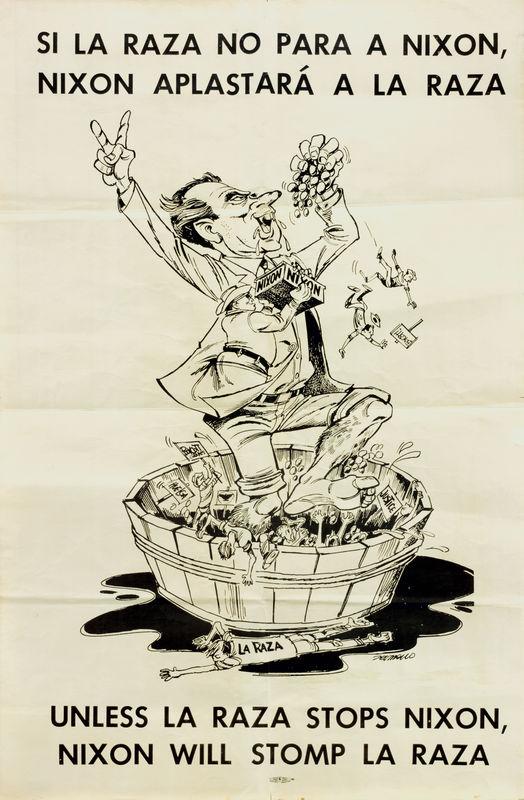
Shirley Chisholm (D-N.Y.) becomes the first African American woman elected to Congress, serving in the U.S. House of Representatives.
The Ashanti Art Service, located in Pasadena, begins publishing Nigger Uprising, one of the few black literary and art journals in California. Published by Ridhiana Saunders, the journal has a specific black nationalist mission and poses political critiques to the larger white establishment.
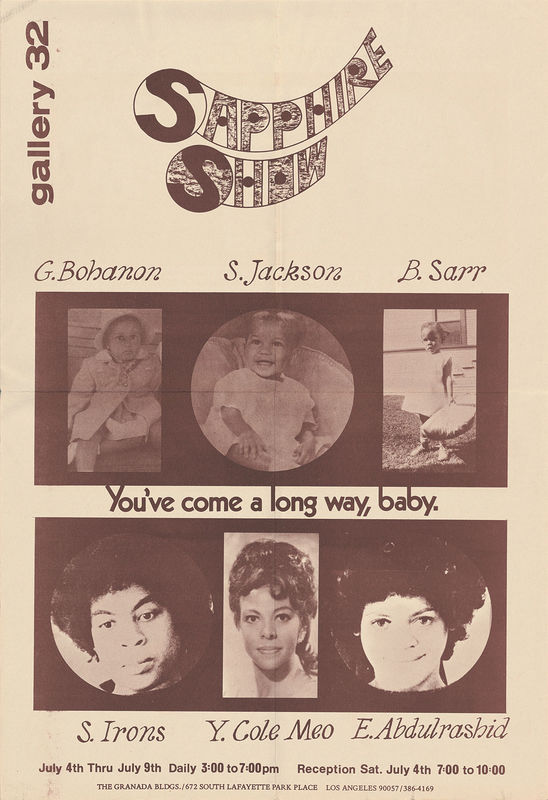
Suzanne Jackson opens Gallery 32 in Los Angeles, showing work primarily from younger and more experimental artists and hosting open forums, poetry readings, and fund-raisers.
Claude Booker, Cecil Fergerson, and others form the Los Angeles Black Arts Council. One of its main objectives is to bring public attention to racism in LACMA's hiring and exhibition practices and to demand inclusion of African American voices at the county-funded institution.

The Coalition of Black Revolutionary Artists (COBRA) forms on the South Side of Chicago. This artists' collective would later become well known as AfriCOBRA, African Commune of Bad Relevant Artists.
Lorraine Hansberry's play To Be Young, Gifted and Black premieres in New York.
Black Panther leaders Bunchy Carter and John Huggins are killed on the UCLA campus during a gunfight with members of Ron (Maulana) Karenga's US organization. The dispute erupts from a disagreement over which political organization would govern the direction of the UCLA Black Studies program.
President Nixon approves the bombing of Cambodia.
H. Rap Brown (later Jamil Abdullah Al-Amin) publishes the autobiographical Die Nigger Die!, telling his personal journey in becoming a revolutionary leader in the black nationalist movement.
Artists Rozzell Sykes and his nephew Roderick Sykes move into St. Elmo Village in mid-city Los Angeles. Their mission is to informally redevelop the neighborhood into a vibrant "art colony" to encourage social creativity and tolerance.
Police raid the Stonewall Inn, a gay bar in Greenwich Village in New York City. The resulting uprising, called the Stonewall rebellion, lasts three days and inaugurates the gay liberation movement.
The first Pan-African Cultural Festival begins in Algiers. The event is marked as a hopeful moment for the rising number of African nations that had recently gained independence. One of the festival's purposes is to inspire the formation of new cultural nationalisms in the wake of cast-off colonial regimes.
Astronaut Neil Armstrong walks on the moon, making his "one small step for man, one giant leap for mankind."
The Woodstock Music and Art Fair opens in upstate New York. More than four hundred thousand young people converge on a 600-acre farm to hear musicians such as Joan Baez, Jimi Hendrix, and the Grateful Dead.
UCLA launches its Ethnic Studies program at the Institute of American Cultures. Composed of four research areas—African American, Mexican American, Asian American, and American Indian—the institute seeks to expand research within academia related to the marginalized histories of non-Anglo Americans.
Eighty Native American college students take over Alcatraz Island in San Francisco Bay and occupy it for nineteen months. For the good of "Indians of all tribes," they offer to purchase the land for $24 in beads and cloth in order to establish an American Indian university, museum, and cultural center and to make the island into an Indian reservation.
The Jackson Five appear on the Ed Sullivan Show with an eleven-year-old Michael Jackson.
Music producer-arranger Bob Thiele launches the Flying Dutchman music label in Los Angeles. It seeks out progressive artists who experiment with jazz and soul music fused with black politics.
In response to President Nixon's televised speech announcing the deployment of U.S. troops to Cambodia, students at Kent State University in Ohio stage a massive war protest, which results in the dispatch of National Guard troops. Four students are killed and ten wounded by guardsmen.
The first issue of Essence, a monthly beauty magazine for African American women, is published.
Los Angeles's first "gay pride" parade is held in Hollywood.
During a hearing held at the Marin County Courthouse in northern California, an armed attempt is made by the younger of the Soledad Brothers to free three prisoners accused of murdering a guard at Soledad Prison. UCLA assistant professor Angela Davis, accused of purchasing the weapons used in the incident, is charged with murder, kidnapping, and conspiracy, leading to an extensive "Free Angela Davis" campaign; she is acquitted in 1972 after spending one year in jail. Davis becomes an important icon of the Black Power movement.
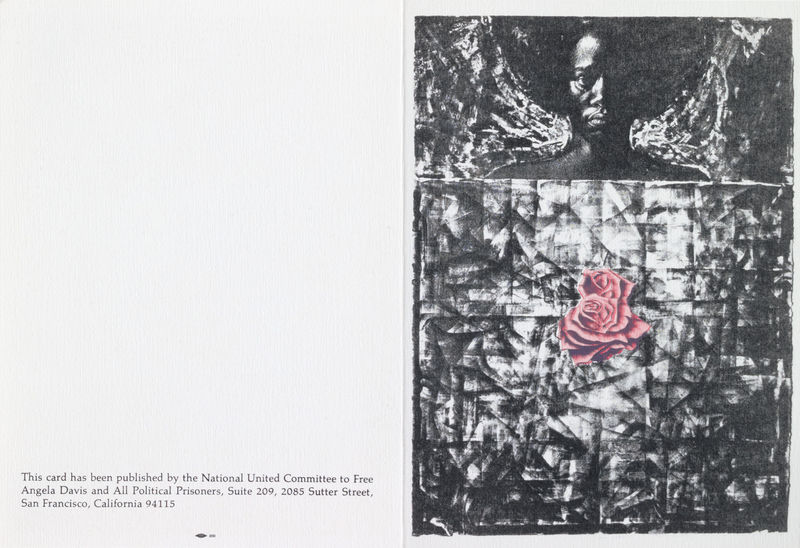
Cheryl Brown, Miss Iowa, becomes the first African American contestant and finalist in the Miss America beauty pageant.
Ronald Reagan is elected to a second term as governor of California.
In San Francisco, René Yañez helps found Galería de la Raza in the Mission District. Its goal is to showcase the work of Latino and Chicano artists.
Women, Artists, and Students for Black Liberation is founded in New York City.
Hip-hop is born in the Bronx, New York; its varied forms include rap, dj-ing, graffiti art, and break dancing.
LACMA puts on Three Graphic Artists: Charles White, David Hammons, and Timothy Washington, the first of three exhibitions over the next five years dedicated to African American artists. The exhibitions are prompted by the advocacy work of the Los Angeles–based Black Arts Council.
In Uganda, Idi Amin assumes power and appoints himself president.
The Whitney Museum of American Art, New York, presents the exhibition Contemporary Black Artists in America, which elicits controversy because no black specialists were involved in the selection. In response, a coalition of local black artists launch a counter-exhibit, Black Artists in Rebuttal, at the Acts of Art Gallery.
The film Sweet Sweetback's Baadasssss Song is released, written, produced, and directed by Melvin Van Peebles with a score by Earth, Wind, and Fire. The plot centers on an African American man trying to get out from under white persecution, and the movie is generally acknowledged as having launched the "blaxploitation" film genre.
Marvin Gaye releases "What’s Going On," a song inspired by his brother's return from serving in Vietnam.
Congress ratifies the 26th Amendment, which lowers the voting age from twenty-one to eighteen.
State troopers descend on Attica Correctional Facility in New York State to end a four-day inmate uprising protesting the prison's poor living conditions. Eleven guards and thirty-two prisoners are killed in the resulting conflict.
Soul Train premieres on national television with guests Gladys Knight and the Pips. In its thirty-five-year history—one of the longest runs in syndication in the history of television—the show will feature performances by a wide array of African American musicians from various genres.
The Equal Rights Amendment for women passes the House of Representatives but later fails to be ratified.
The Compton Communicative Arts Academy receives a $20,000 grant from the National Endowment for the Arts in recognition of its successful community-centered art programs for local African American and Latino youth.
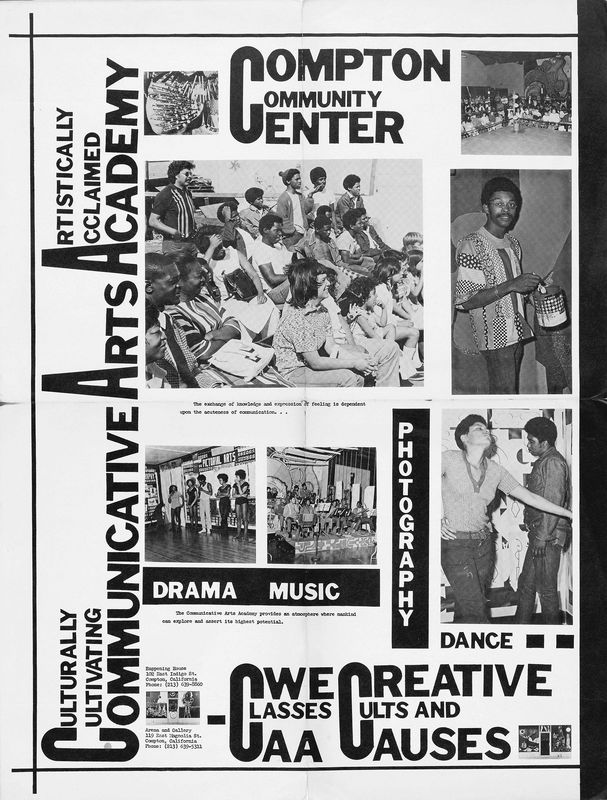
After his break with the SCLC, the Reverend Jesse Jackson of Chicago announces the founding of Operation PUSH (People United to Save Humanity), a new program to address the needs of the local urban community in areas such as employment, youth, and civil rights advocacy.
Lorenzo Milan founds KPOO radio station in San Francisco, the first black-owned, noncommercial radio station west of the Mississippi.
D-Q University, the first of six Indian tribal colleges founded in the United States, opens just west of Davis, California.
Charles Mingus's book Beneath the Underdog, about growing up in Watts, is published.
Sanford & Son premieres on NBC starring Demond Wilson and Redd Foxx. The show traces the lives of a widower and his son living in Watts, and goes on to become one of the most successful black-oriented television series in history, ending in 1977.
Shirley Chisholm (D-N.Y.), the first African American woman elected to Congress, announces her presidential candidacy.
In Northern Ireland, British troops open fire during a civil rights march, resulting in fourteen deaths. The incident becomes known as the Bloody Sunday massacre and is a precursor to the escalating violence against the Irish under British rule.
Ms. magazine publishes its first regular issue. The magazine will go on to become a centerpiece of feminist activism throughout the 1970s.
Ishmael Reed's fiction masterpiece Mumbo Jumbo is released.
Modeled on the Black Panther Party, the Chicano activist group the Brown Berets occupy Catalina Island near Los Angeles. Their purpose is to raise awareness of relations between Anglos and Latinos.
Carlos Bueno, a California painter and muralist, and others organize the first Día de los Muertos (Day of the Dead) celebration in Los Angeles. The revival of the popular Mexican holiday is one of many events marking the growing support of the Chicano movement. The holiday has become one of the largest annual festivals in California.
President Nixon is reelected.
California assemblywoman Yvonne Brathwaite Burke is elected to Congress, becoming the first black woman from a western state to serve in the House of Representatives.
In Australia, Neville Bonner becomes the first Aborigine to be elected to the federal parliament.
The Supreme Court rules in Roe v. Wade to legalize abortion.
The Paris Peace Accords take place, resulting in the end of direct U.S. military involvement in Vietnam and a temporary armistice between North and South Vietnam.
American Indian Movement members occupy Wounded Knee, on the Pine Ridge Indian Reservation in South Dakota. The area was the site of a Sioux massacre by American soldiers in 1890.
The Los Angeles Sentinel, an African American–owned and –operated newspaper with an emphasis on the Los Angeles black community, celebrates its fortieth anniversary.
Tom Bradley is elected the first black mayor of Los Angeles, becoming the second African American mayor of a major urban area in the United States. He will serve for five terms over the next twenty years, the longest tenure of any mayor in Los Angeles's history.
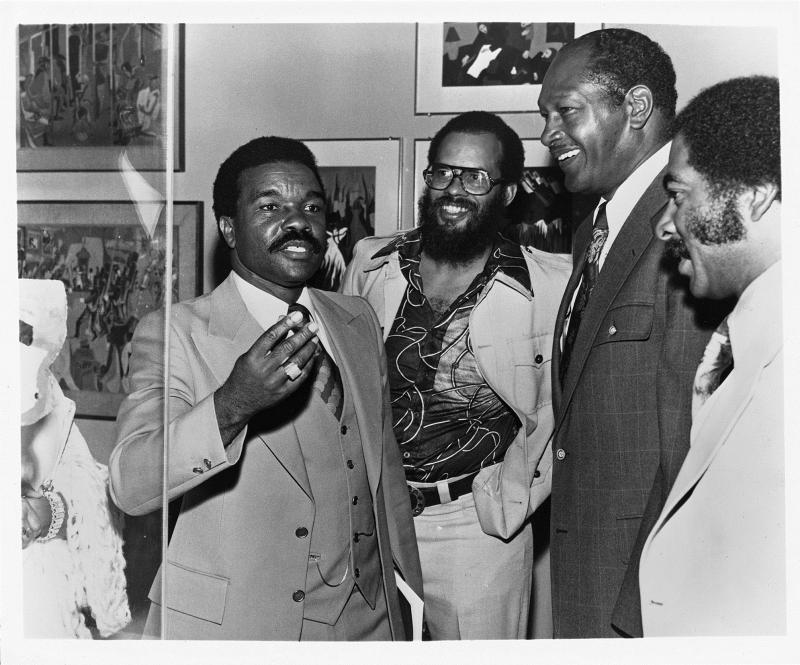
Doris A. Davis is elected mayor of Compton, California, becoming the first African American woman to serve as mayor of a large urban area.
Cesar Chavez calls an end to the grape pickers' strike after the Teamsters Union and the United Farm Workers Union reach an agreement.
General Augusto Pinochet is named commander in chief of the Chilean army by President Salvador Allende. Weeks later Allende's rule is ended by a violent military coup. Chile would experience nearly two decades of brutal repression under Pinochet’s military dictatorship.
The film The Spook Who Sat by the Door is released. Based on a novel of the same name by Sam Greenlee, published in 1969, it is an examination of the civil rights movement and black militancy.
Seventeen-year-old Joyce Elaine Hawkins becomes the first African American princess on the Royal Court for the 85th Annual Pasadena Tournament of Roses.
Renowned Los Angeles African American architect Paul R. Williams retires. He designed more than two thousand private homes, most in Los Angeles, including those for Frank Sinatra, Bill "Bojangles" Robinson, Lucille Ball, Tyrone Power, and Barbara Stanwyck. His public projects included the futuristic theme building at Los Angeles International Airport, the Los Angeles County Courthouse, and the Beverly Hills Hotel.
The Pointer Sisters, the debut album of the Oakland-based female group, is released.
Betye Saar organizes the Black Mirror exhibition of African American female artists at Womanspace in Los Angeles.
The J. Paul Getty Museum opens in Malibu, California. Designed by Robert E. Langdon Jr. and Ernest C. Wilson Jr., the museum showcases Greek and Roman antiquities and is a replica of a Roman seaside villa.
Publishing heiress Patty Hearst is kidnapped by the Symbionese Liberation Army. The group demands that millions of dollars be donated to hunger relief organizations in California in exchange for Hearst's release. Eventually Hearst participates in the group's armed robberies, leading to a conviction in 1976 despite her Stockholm Syndrome defense. Hearst serves two years in prison before having her sentence commuted by President Jimmy Carter in 1979.
The Caribbean island of Grenada officially gains its independence from Great Britain and establishes a parliamentary democracy.
The World Trade Center opens in New York City. At 110 stories, it is the tallest building in the world.
Facing impeachment in the wake of the Watergate scandal and allegations of tax evasion, Richard Nixon resigns as president. Gerald Ford becomes the thirty-eighth president of the United States. In September, President Ford pardons Nixon for any crimes he may have committed while in office.
Charles White becomes the second African American painter after Henry Ossawa Tanner to be elected as a member of the National Academy of Design.
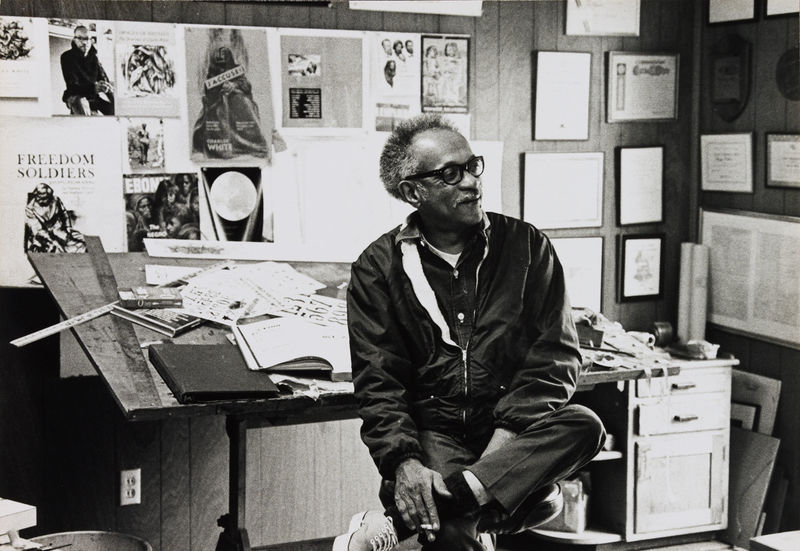
The "Rumble in the Jungle" boxing match between Muhammad Ali and George Foreman takes place in Kinshasa, Zaire (which later becomes the Democratic Republic of the Congo). Ali beats the younger Foreman.
Democrat Jerry Brown wins the California gubernatorial race. Mervyn Dymally is elected as lieutenant governor, becoming the first African American to hold that position in any state since Reconstruction.
South Africa is suspended from the United Nations General Assembly because of its racist policies.
The new Los Angeles Institute of Contemporary Art opens in Century City.
Linda Goode Bryant opens Just Above Midtown Gallery on West Fifty-Seventh Street in New York as an alternative venue for cutting-edge African American (and other) artists and providing consistent exposure of black West Coast art.
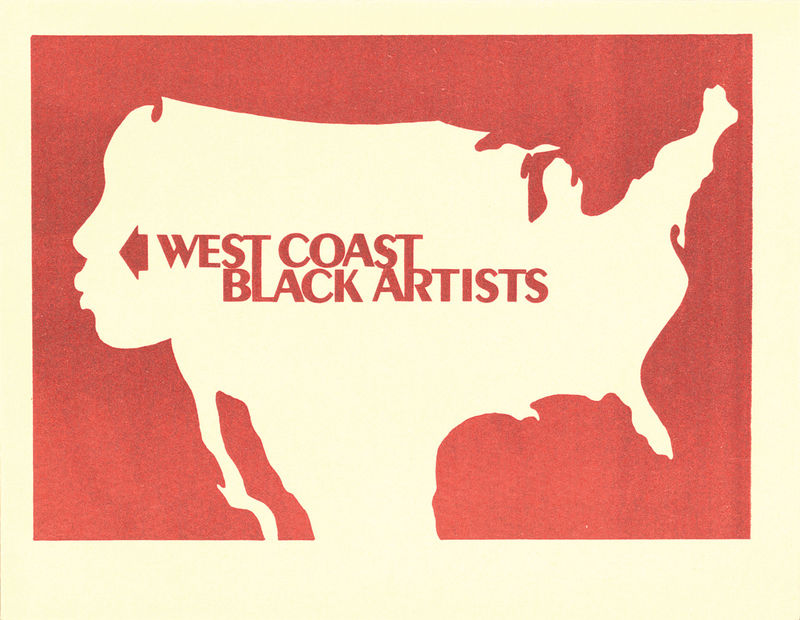
Work begins on the Great Wall of Los Angeles mural, among the largest public art landmarks in the city. Measuring over a half mile long, the completed mural depicts the contributions of various racial and ethnic groups to the history of Los Angeles.
In New York City, Afrika Bambaataa (born Kevin Donovan) forms the Universal Zulu Nation, a music collective of socially and politically conscious deejays and rap and hip-hop artists. The organization seeks to provide a more positive alternative to black youth increasingly involved in gang life and violence.
Trinidadian musician Lord Shorty releases his song "Indrani," the first fusion of calypso music with East Indian percussion, creating the new "soca" (soul of calypso) genre.
The Wiz, a musical version of L. Frank Baum's The Wonderful Wizard of Oz, opens at the Majestic Theater on Broadway with an all-black cast. The show will run for four years, with more than 1,600 performances.
Seeking independence for Puerto Rico from the United States, the Fuerzas Armadas de Liberación Nacional Puertorriqueña, otherwise known as the Puerto Rican Armed Forces of National Liberation, set off bombs in New York City.
Ethiopia ends its three-thousand-year-old monarchy and proclaims Marxism-Leninism as its new form of government.
Saigon falls to the North Vietnamese.
Homosexuality is legalized in the state of California with the passage of a bill authored by African American state assemblyman Willie Brown of San Francisco.
The Los Angeles City Council approves giving oversight of the Watts Towers to the Los Angeles Municipal Arts Department. The adjacent Watts Towers Arts Center will go on to host the Watts Summer Festival, the Watts Jazz Festival, and the Day of the Drum Festival.
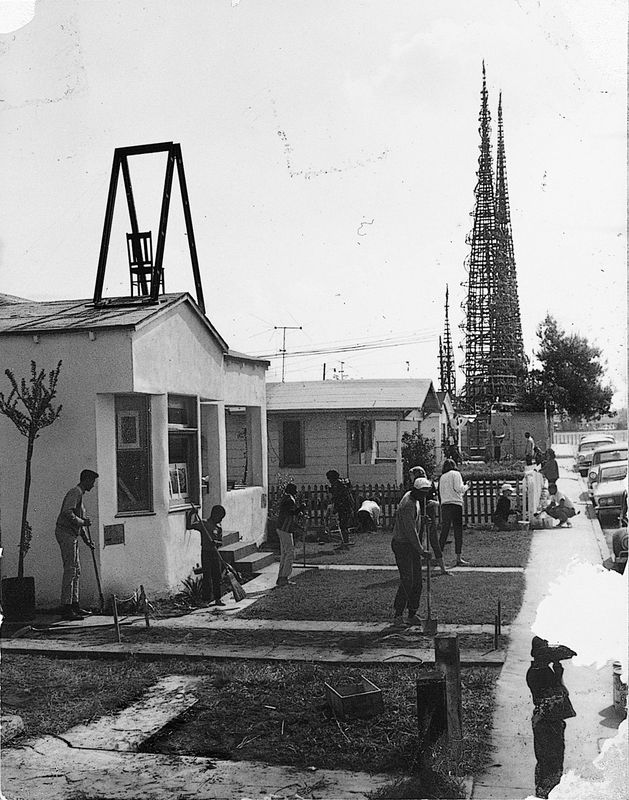
The first Black History Month launches. The national celebration of the contributions and histories of African Americans grew out of Negro History Week, sponsored by the Association for the Study of Negro Life and History, which was first celebrated in February 1926.
California governor Jerry Brown reorganizes California's arts policy organizations. He ends the California Arts Commission, the long-standing state mechanism for arts funding, and creates the California Arts Council, whose founding members include Noah Purifoy. For the first time, the new council includes artists in deciding the grants-in-aid and focuses more on community-based art projects.
Steve Jobs and Stephen Wozniak launch Apple Computer, Inc.
The Los Angeles city school system desegregates its teaching staff, and in the first year more than two hundred of the city's teachers are transferred. In June the California Supreme Court rules in favor of busing in order to institute desegregation in the Los Angeles Unified School District.
Alex Haley publishes Roots, a novel that emerged from his personal search for his African ancestry. The following year, it is awarded a Pulitzer Prize and made into a renowned television miniseries.
Premiere of the television show What’s Happening!!, which follows the lives of three African American teens in Watts. The show will run until 1979. Its title loosely references the Watts Happening Coffeehouse, a centerpiece of black artistic production in the 1960s and 1970s.
In Northern California, Bulgarian-born artist Christo (Javacheff) installs his Running Fence in Sonoma and Marin Counties, California. The work is 24.5 miles long and composed of white nylon.
Watts community artists John Outterbridge, Alonzo Davis, and Greg Bryant establish Los Angeles's first jazz festival. Over the years the Simon Rodia Watts Jazz Festival will come to represent the entire range of jazz expressions while also providing a venue for other local arts, crafts, cuisines, and workshops.
The first Oakland Black Cowboys Parade is held to raise awareness of the contributions made by African Americans to the growth of the American West.
James Earl "Jimmy" Carter, the first presidential candidate from the Deep South since the Civil War, is elected the thirty-ninth president of the United States.
Dr. Samella Lewis, a professor at Scripps College, cofounds Black Art: An International Quarterly in Los Angeles and opens the Museum of African American Art in the Baldwin Hills Crenshaw Plaza.
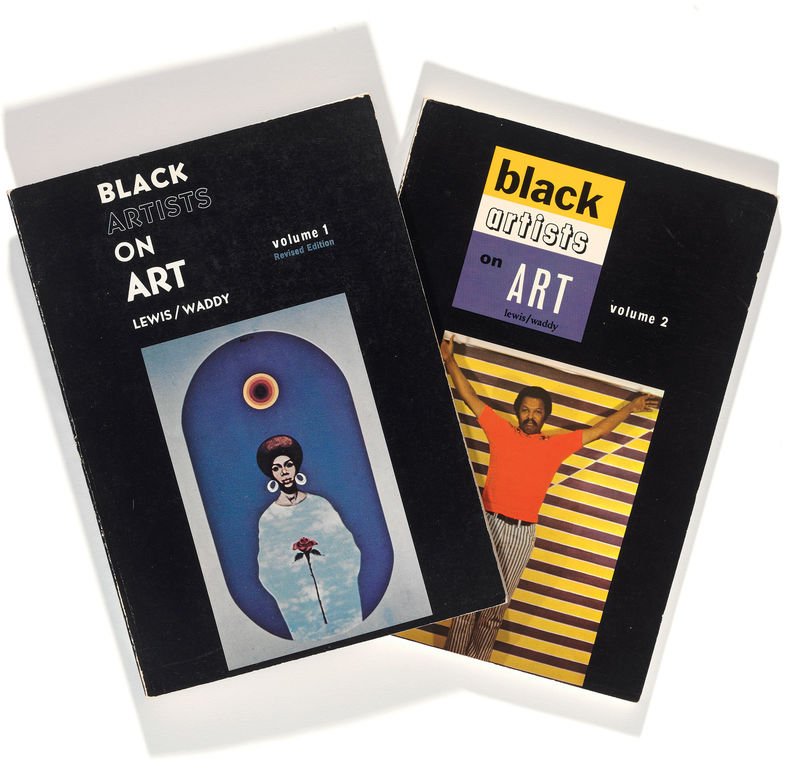
President Carter appoints Patricia Harris as Secretary of Housing and Urban Development (HUD), making her the first African American woman to serve on any president's cabinet and to move into the presidential line of succession.
HUD allocates $250,000 for preserving the Watts Towers.
The Combahee River Collective Statement is drafted in Boston. The black feminist organization that authored the text had begun meeting in 1974 and was named after the Combahee River area where Harriet Tubman had freed more than 750 slaves. The manifesto argues that racism, sexism, and classism do not operate independently from one another, but instead work in tandem.
In Argentina, fourteen mothers whose children were among the "disappeared" begin congregating to protest Argentina's "Dirty War." They will meet every Thursday in the main plaza of Buenos Aires for more than a decade, becoming globally renowned human rights activists known as the Asociación Madres de Plaza de Mayo (Mothers of the Plaza de Mayo).
New York City is struck with a twenty-five-hour power blackout, resulting in urban disturbances and looting.
The state of California charters the California African American Museum, which will initially launch in 1981 in temporary quarters at the Museum of Science and Industry. A permanent building, designed by African American architects Jack Haywood and Vince Proby, opens in Exposition Park during the 1984 Olympic Games.
The Community Reinvestment Act is passed, requiring that banks serve their entire community by providing loans to low- and moderate-income neighborhoods.
The United Nations votes unanimously to impose an arms embargo against South Africa to pressure it to end apartheid. The embargo is partially a result of the death, while in the custody of government officials, of antiapartheid leader Steve Biko; more than fifteen thousand people attend his funeral.
Writer and director Charles Burnett submits Killer of Sheep for his MFA in film at UCLA. The film, which traces African American life in Los Angeles, would go on in 1981 to win the Critics Award at the Berlin International Film Festival. In 1990 the Library of Congress declared it a national treasure and placed it among the first fifty films entered in the National Film Registry for its historical significance.
Dick Griffey founds SOLAR Records (an acronym for Sound of Los Angeles Records).
In Kenya, Wangari Maathai helps lead the Green Belt Movement, which grows out of her work on the National Council of Women. The organization seeks to train poor rural women to stop deforestation and soil erosion by planting trees and to help restore their food and water sources.
NASA names thirty-five astronaut candidates to fly on the next space shuttle, including Sally K. Ride, who would become America’s first woman in space, and Guion S. Bluford Jr., who would become America’s first black astronaut in space.
Harriet Tubman becomes the first African American woman honored on a postage stamp.
California voters overwhelmingly pass Proposition 13, which provides for major cuts in property taxes. As a result, city social services such as the arts and education are severely reduced.
The hierarchy of the Church of Jesus Christ of Latter-Day Saints decides to allow African American men to become priests. Days later Joseph Freeman Jr. becomes the first black Mormon priest.
President Carter, Menachem Begin of Israel, and Anwar Sadat of Egypt sign the Camp David Accords. The provisions include the establishment of a self-governing authority in the West Bank and the Gaza Strip and better diplomatic and trade relations between Egypt and Israel. A month later the Nobel Peace Prize is awarded jointly to Begin and Sadat for brokering the Middle East peace agreement.
San Francisco's mayor, George Moscone, and the city's first openly gay supervisor, Harvey Milk, are shot and killed at City Hall by former supervisor Dan White. Pleading diminished capacity in what becomes known as the "Twinkie Defense," White is convicted of voluntary manslaughter, not murder. The verdict sets off the "White Night" protests on May 21, 1979, involving thousands of demonstrators outside City Hall.
Trinidadian-born American civil rights and Black Power activist Stokely Carmichael changes his name to Kwame Ture in honor of Kwame Nkrumah and Ahmed Sékou Touré, the first presidents of independent Ghana and Guinea, respectively.
The musical group Los Lobos release their first album, Just Another Band from East L.A.
The Shah of Iran flees for Egypt as many Iranians align with Ayatollah Ruhollah Khomeini. Once in power, the Ayatollah establishes a Muslim theocracy with a Shiite majority.
More than five thousand farmworkers take to the streets in Northern California in support of the United Farm Workers Union lettuce strike.
Ugandan rebels and exiles join forces with Tanzania to oust dictator Idi Amin, who flees first to Libya and then to Saudi Arabia.
In England, Conservative Party leader Margaret Thatcher is elected prime minister, making her the first woman to hold that office. She will serve three terms of office until 1990.
Bishop Abel Muzorewa is elected the first black prime minister of Zimbabwe-Rhodesia, the name given to the country in the brief period before full independence. Days later the country proclaims independence from Britain.
Sandinista rebel soldiers establish control of the Nicaraguan government.
Michael Jackson launches his solo career at the age of twenty-one with the release of the album Off the Wall.
The Sugar Hill Gang releases the hit song "Rapper's Delight," later claiming it as the beginning of hip-hop.
The Museum of Contemporary Art, Los Angeles, is founded.
The Laugh Factory opens on the Sunset Strip; Richard Pryor is one of the first comedians to perform there.
Judy Chicago produces The Dinner Party as part of a feminist collaborative project.
Robert Johnson launches Black Entertainment Television (BET).
Black nationalists win elections in Rhodesia leading to a black-run government; the country is renamed Zimbabwe.
The $22 million Star Wars sequel The Empire Strikes Back premieres, starring Mark Hamill, Harrison Ford, Carrie Fisher, and Billy Dee Williams.
Huey P. Newton, cofounder of the Black Panther Party, finishes his PhD at the University of California, Santa Cruz. His dissertation is titled "War Against the Panthers: A Study of Repression in America."
Ronald Reagan is elected the fortieth president of the United States.
WHHM-TV in Washington, D.C., becomes the first African American public broadcasting television station.
Section 987(a) of the California State Civil Code is enacted, making it a crime to alter, deface, or destroy a work of fine art.


